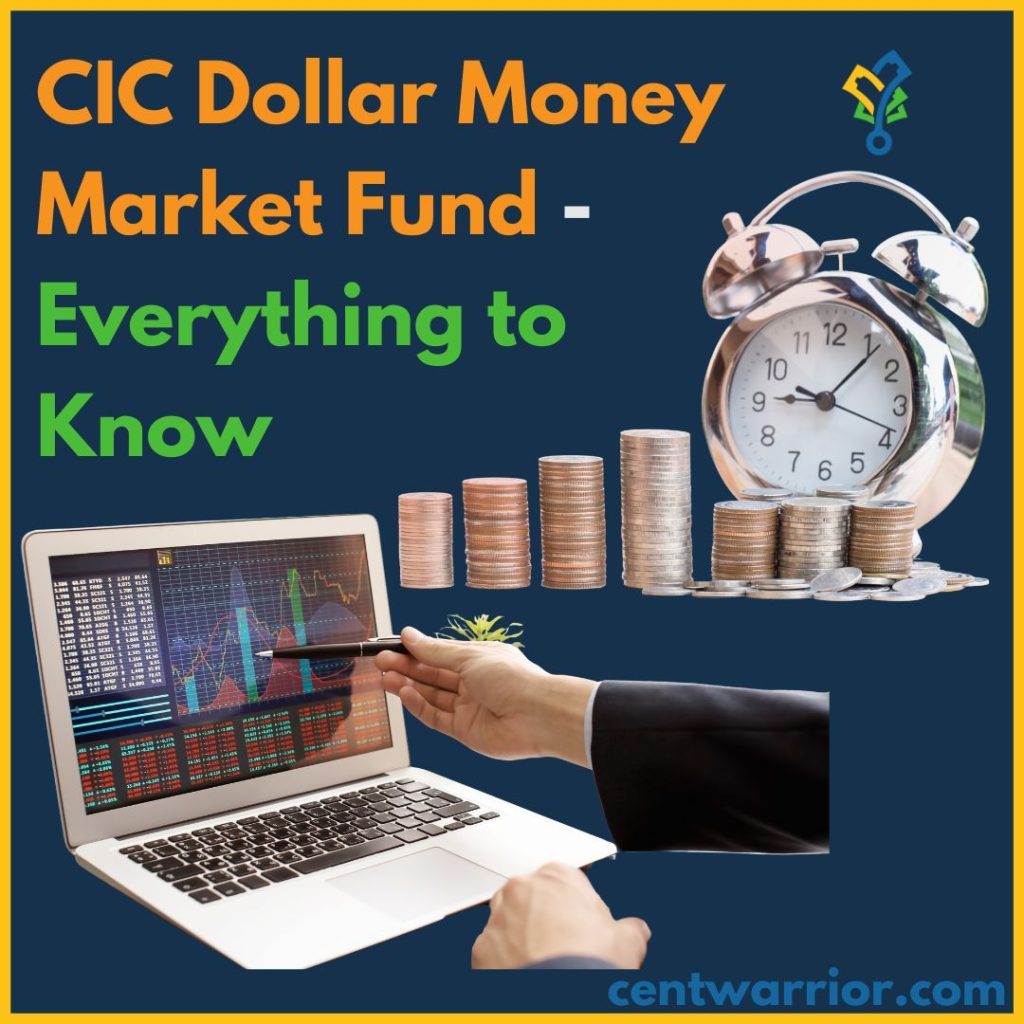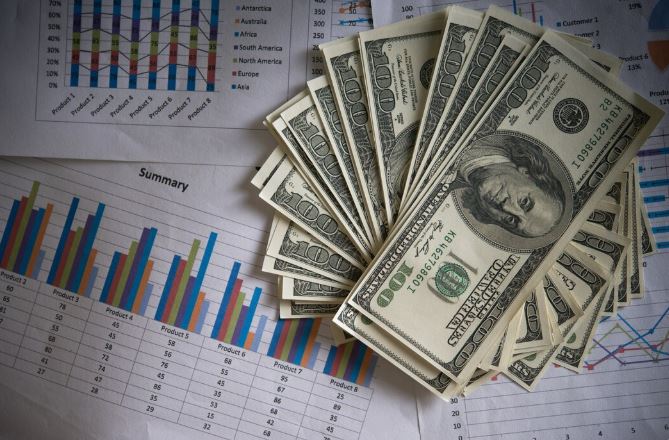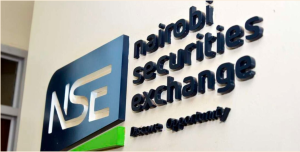If you have lived in Kenya long enough, you know one thing for sure: the Kenya shilling never sleeps. It goes through seasons of strength and weakness, often influenced by global trade, interest rates, and local economic policies.
In recent years, many professionals, entrepreneurs, and even families have started asking themselves: How do I protect my wealth from currency swings?
Enter the CIC Dollar Money Market Fund (CIC Dollar MMF). This fund offers investors an easy and practical way to save and grow in US dollars, without the complexities of international stock markets or the risks of speculative trading.
The CIC Dollar MMF combines capital preservation, liquidity, and competitive returns, all packaged in a regulated, low-risk unit trust. It is designed to give you peace of mind, knowing your money is working for you in one of the world’s strongest currencies.
This blog takes a deep dive into everything you need to know—from performance to risks, from who should invest to how you can get started.

Understanding the CIC Dollar Money Market Fund
At its core, the CIC Dollar Money Market Fund is a collective investment scheme. That means investors pool their dollars together, and CIC Asset Management invests this pool in short-term, low-risk instruments.
Unlike speculative investments, the goal here isn’t to chase the highest possible return. Instead, the fund prioritizes:
- Capital preservation – protecting your dollars from erosion.
- Liquidity – ensuring you can access your money quickly when needed.
- Currency diversification – helping investors spread risk beyond the Kenya shilling.
The fund launched in November 2020, a time when currency markets were turbulent after COVID-19 shocks. In just a few years, it has grown into a significant player in the dollar fund space.
The governance structure gives confidence:
- Trustee: Kenya Commercial Bank (KCB) ensures investor protection.
- Custodian: Co-op Custodial Services safeguards assets.
- Auditors: PwC audits and provides independent assurance.
This framework ensures transparency and accountability, making it one of the most secure avenues for dollar investments in Kenya.
Why Invest in a Dollar Money Market Fund?
Dollar funds are no longer a niche product. They are quickly becoming mainstream for several reasons.
a) Protection Against Shilling Depreciation
The Kenya shilling has experienced pressure over the years. Even when it stabilizes temporarily, the long-term trend has been downward. By investing in dollars, you shield your savings from losing value when the shilling weakens.
b) Better Yields Than Holding Dollars in a Bank Account
If you keep dollars in a bank account, you might earn 0.5% to 2% interest annually. In contrast, the CIC Dollar Fund has recently delivered above 7% annualized yields. That’s at least three times more productive.
c) Ideal for Global Obligations
If you’re a parent with a child studying abroad, an importer paying suppliers in dollars, or even a freelancer earning from global clients, having part of your money in USD makes sense. It reduces the stress of exchange rate volatility when bills fall due.
d) Diversification Beyond the Shilling
Most Kenyans already hold shilling-based assets—real estate, SACCO shares, MMFs in KES. A dollar MMF adds global exposure and helps balance the portfolio.
In short, dollar funds aren’t just for corporates—they are becoming essential even for middle- and high-income households.

Key Features of the CIC Dollar Fund
What makes this fund stand out are its investor-friendly features. Let’s look at them in detail:
| Feature | Details | Why It Matters |
| Fund Manager | CIC Asset Management Ltd | One of Kenya’s top fund managers with deep market experience. |
| Launch Date | November 2020 | Track record of performance and growth since inception. |
| Minimum Initial Investment | USD 1,000 | Accessible to individuals and businesses while keeping the fund stable. |
| Minimum Top-up | USD 100 | Flexible for regular savers and diaspora remittances. |
| Initial Fee | None | Reduces entry cost. Every dollar invested works for you. |
| Annual Management Fee | 1.5% | Competitive compared to peers. Covers professional fund management. |
| Distribution | Monthly | Regular cash flow makes it attractive for people needing steady income. |
| Risk Profile | Low | Focused on capital preservation. |
| Current AUM (May 2025) | USD 31.9 million | Indicates strong growth and trust among investors. |
These features demonstrate that the CIC Dollar MMF isn’t a speculative product—it’s structured for consistency, safety, and investor convenience.
Performance Overview
The CIC Dollar MMF has built a reputation for stability while still delivering competitive returns.
Recent Yields (as of 5th September 2025):
- Effective annual yield: 4.74%
This places it well above ordinary savings and even some competitors in the dollar MMF space.
Market Outlook
Several factors influence performance:
- The US Federal Reserve has kept rates steady at 4.25%–4.50%, maintaining attractive fixed deposit yields.
- Global GDP growth has slowed to 2.4% in 2025, affecting demand for capital markets.
- Inflation remains high at 4.3% (August 2025), which has influenced investor appetite for safer instruments like money market funds.
In this environment, CIC is well-positioned to lock in attractive longer-term rates while ensuring liquidity for investors.
Asset Allocation Strategy
A good fund isn’t just about returns—it’s about how the money is invested. CIC’s strategy balances liquidity, safety, and return potential.
| Asset Class | Allocation % | Purpose |
| Fixed Deposits | 36.79% | Generate steady interest with low risk. |
| Eurobonds | 29.40% | Dollar-denominated government securities that provide higher yields. |
| Unit Trusts | 24.89% | Diversifies exposure within regulated markets. |
| Demand Deposits | 8.84% | Ensures high liquidity for withdrawals. |
| Cash & Settlements | 0.08% | Buffer for day-to-day fund operations. |
This allocation strikes a careful balance—ensuring the fund isn’t overexposed to one asset type while still capturing strong yields from Eurobonds and deposits.

CIC Dollar Fund in the Wider Market
The Kenyan Collective Investment Schemes (CIS) market has grown massively, with over Ksh 596 billion in AUM by June 2025.
CIC is among the top players:
- CIC Unit Trust Scheme: Ksh 93.4 billion (15.7% market share).
- CIC Dollar MMF: Ksh 4.29 billion (USD equivalent) – making up 1.2% of the MMF category.
This positions CIC as a reliable leader, not just in shilling MMFs but also in foreign-currency products.
In the USD fund segment, CIC competes strongly with:
- Absa Dollar MMF (USD 2.3B AUM)
- NCBA Dollar MMF (USD 6.6B AUM)
- Jubilee Dollar MMF (USD 2.6B AUM)
- Dry Associates Dollar MMF (USD 2.3B AUM)
Clearly, CIC isn’t playing catch-up—it is part of the leading circle of dollar fund managers in Kenya.
Also Read:
- Lofty-Corban USD Money Market Fund
- Kuza Money Market Fund USD
- Cytonn Money Market Fund USD
- Britam Money Market Fund USD
Who Should Invest?
The CIC Dollar Money Market Fund is not just for a niche group of investors—it’s designed for anyone who touches, earns, spends, or plans around the US dollar. Let’s unpack this:
Importers and Exporters
If you’re running a business that relies on imports—whether it’s raw materials, electronics, or medical supplies—you already know the sting of a weakening shilling. A single unexpected swing in forex can wipe out profit margins. By keeping part of your working capital in the CIC Dollar Fund, you hedge against these risks.
Exporters, on the other hand, often receive payments in dollars. Instead of leaving that money idle in a low-yield bank account, channeling it into this fund helps you earn competitive returns while you prepare for your next shipment.
Parents with Children Abroad
Every semester, thousands of Kenyan parents scramble for dollars to pay tuition fees and living expenses in the US, UK, Canada, and Australia. With the shilling unpredictable, waiting until the last minute often means paying more. By gradually saving in the CIC Dollar Fund, parents can plan ahead, lock in steady returns, and avoid stress when fees are due.
Diaspora Kenyans
For Kenyans living abroad, sending money home is common. The challenge is always: where should those dollars go? The CIC Dollar Fund offers a way to keep remitted money safe, liquid, and earning in USD. This is especially valuable for diaspora professionals who want to support their families back home while also building a local investment base.
High-Net-Worth Individuals (HNWIs)
Wealthy individuals understand the importance of diversification. Many already own property, SACCO shares, and local bonds. Adding a dollar-denominated fund to their portfolio introduces global exposure and shields them from single-currency risk. For them, this isn’t just about returns—it’s about wealth preservation across generations.
Professionals Planning Ahead
Think about retirement travel, buying property abroad, or even funding a child’s future in international education. These long-term goals often come with dollar-denominated costs. By investing now, professionals can accumulate a buffer in USD, avoiding the stress of exchange rate surprises later in life.
In short, whether you’re a business owner, a parent, a diaspora worker, or a professional with international goals—the CIC Dollar Fund provides a simple yet effective way to anchor part of your wealth in a stable currency.

Risks and Considerations
No serious investment conversation is complete without acknowledging the risks. The CIC Dollar Fund is low-risk, but not risk-free. Here’s what to keep in mind:
- Currency Risk
While the fund shields you from Kenya shilling depreciation, it doesn’t protect you if the US dollar itself weakens globally. For example, if the dollar loses ground against the euro or pound, your relative purchasing power abroad may reduce.
- Interest Rate Risk
The fund’s returns are tied to global interest rates, especially the US Federal Reserve. If the Fed cuts rates significantly, yields from fixed deposits and Eurobonds could fall, reducing your returns.
- Inflation Risk
If inflation in the US remains stubbornly high, your real return (return minus inflation) could be lower than expected. For instance, earning 6.5% when inflation is 4.5% means you’re only gaining 2% in real terms.
- Regulatory Disclaimer
As per CMA rules, no collective investment scheme can guarantee returns. The value of units may go up or down. This isn’t a fixed deposit; it’s a managed fund.
The key takeaway?
The CIC Dollar MMF works best when aligned with specific goals: preservation, liquidity, and dollar exposure. It’s not meant for aggressive growth or chasing speculative returns.
How to Get Started
Getting into the CIC Dollar Money Market Fund is straightforward, whether you’re in Nairobi, Mombasa, or New York. Here’s the step-by-step process:
- Account Opening
You can visit CIC Asset Management offices, talk to an agent, or sign up through their online portal. For many diaspora investors, digital onboarding makes it especially convenient.
- Submit Documents
You’ll need a copy of your national ID or passport, KRA PIN, and proof of a dollar account (bank statement or cheque). These requirements align with CMA’s Know Your Customer (KYC) standards.
- Deposit Funds
The minimum starting amount is USD 1,000. Top-ups are flexible at USD 100. You can fund via bank transfer, standing orders, or diaspora remittances.
- Track Growth
Once invested, your money starts earning immediately. Interest is calculated daily and credited monthly, so you can see growth in real time.
- Access Anytime
Withdrawals are straightforward—no penalties, no hidden charges. Whether you need cash for school fees, a business transaction, or personal use, CIC ensures your funds remain accessible.
For diaspora investors, CIC has made the process seamless by linking with remittance partners. This means you can invest in the fund directly from abroad without routing through multiple bank accounts.
In short, starting is easy, and once you’re in, you benefit from a transparent, flexible, and investor-focused structure.

Future Outlook
The rise of foreign currency-denominated funds is no accident. They now hold 10% of CIS AUM in Kenya, a figure that will only grow.
For CIC, the outlook is strong:
- Continued demand from diaspora and corporates.
- Rising popularity among parents and professionals.
- Potential innovation—such as Shariah-compliant USD MMFs.
Simply put, dollar funds are here to stay, and CIC is at the front of that movement.
Conclusion
The CIC Dollar Money Market Fund isn’t just another financial product—it’s a wealth protection tool.
At a time when the shilling fluctuates, global markets shake, and inflation eats into savings, having a portion of your wealth in USD-denominated, low-risk, liquid investments is simply wise.
Whether you’re paying school fees, importing goods, saving diaspora income, or simply diversifying, this fund offers a safe and rewarding option.
If you’re ready to protect and grow your dollars, explore the CIC Dollar Money Market Fund today.
FAQs
1. What is the minimum investment for CIC Dollar MMF?
The entry point is USD 1,000, and once you’re in, you can top up with as little as USD 100. This balance makes the fund accessible to individuals while still maintaining stability. For example, a young professional in Nairobi can commit USD 1,000 upfront, then steadily add USD 100 every month, gradually building a strong USD savings cushion.
2. How does the CIC Dollar Fund differ from a shilling-based MMF?
The key difference is currency exposure. A shilling MMF pays interest in KES, which is fine if all your expenses are local. But if you need dollars—for school fees abroad, business imports, or even travel—holding only KES exposes you to currency depreciation. The CIC Dollar MMF eliminates that risk because you invest, earn, and withdraw in USD.
3. Can diaspora investors participate in the fund?
Yes. Diaspora Kenyans are among the biggest beneficiaries of this fund. Instead of sending money back home to sit in relatives’ accounts or low-interest dollar bank accounts, you can invest directly into the CIC Dollar MMF. This way, your remittances are not only safe but also earn competitive USD returns while staying liquid for emergencies or family needs.
4. How are returns calculated and paid out?
Returns are calculated daily and credited monthly. This means that even if you invest mid-month, your dollars immediately begin working for you. For instance, if you place USD 10,000 in the fund, you will see interest accrue every day, and at the end of the month, it’s credited to your account. This structure makes the fund a great option for anyone who values consistent, predictable cash flow.
5. Is the fund completely safe from exchange rate fluctuations?
Not entirely. The CIC Dollar Fund shields you from Kenya shilling depreciation but cannot protect you from the global strength or weakness of the USD. For example, if you later need to convert USD to euros or pounds, you may still face forex movements. However, for investors with dollar-based obligations, the protection against the KES depreciation alone is a huge advantage.
6. What are the tax implications of investing in this fund?
Returns from the CIC Dollar MMF are subject to withholding tax under Kenyan law, generally 15%. The tax is deducted at source, which means the monthly interest you receive is already net of tax. This makes your planning easier because there are no surprises when it comes to tax compliance.
7. Can I switch from CIC’s shilling MMF to the Dollar MMF (and vice versa)?
Yes, you can. CIC allows inter-fund transfers within its unit trust products. This means if you already have money in the CIC Shilling MMF and now want USD exposure, you can switch seamlessly. The reverse is also true. This flexibility allows you to adjust your investment mix based on your evolving financial needs or shifts in the market.
8. How liquid is the CIC Dollar Fund?
The fund is highly liquid. Withdrawals can be made on short notice without penalty fees. For instance, if you’re an importer who suddenly needs to settle an invoice, or a parent paying tuition abroad, you can withdraw without worrying about losing interest or being penalized. This level of flexibility makes the fund attractive compared to fixed deposits.
9. Who regulates the CIC Dollar Fund?
The fund is licensed and regulated by the Capital Markets Authority (CMA) in Kenya. Additionally, it operates under a strong governance framework:
- Trustee: Kenya Commercial Bank (KCB)
- Custodian: Co-op Custodial Services
- Auditor: PwC
These structures ensure transparency, accountability, and investor protection—so your money isn’t just growing, it’s being managed responsibly.
11. Can I use the CIC Dollar Fund as an emergency fund?
Absolutely. Many investors already use it for that purpose. Because it is liquid, low-risk, and pays in USD, it makes an excellent emergency buffer. Think of medical expenses abroad, urgent school fees, or last-minute travel. Unlike land or shares, which can take weeks to liquidate, this fund gives you quick access while still growing your money in the meantime.
12. Is this fund suitable for short-term or long-term investing?
It works for both. In the short term, it offers liquidity and safety—perfect for parking funds while you wait for business payments or plan for upcoming expenses. In the long term, it acts as a currency hedge and a wealth preservation tool. For example, a professional saving for property in Dubai five years from now can steadily grow their USD balance without worrying about future exchange rate shocks.
13. Can institutions also invest in this fund?
Yes, and many do. Corporates, NGOs, and schools with USD-denominated expenses find it useful for cash flow management. Instead of leaving their reserves idle, they earn steady USD returns while keeping money accessible. For institutions, this not only protects against currency depreciation but also provides reliable liquidity for operational needs.







